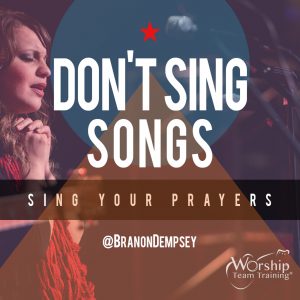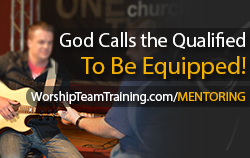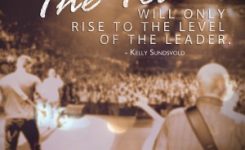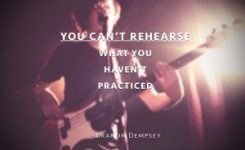Choir, Leaders, Singers, Vocal Team, Voice, Worship Leading, WTTU Special Public Post
Vocal Artistry In Worship (Show #117)
 #TheVocalArtist
#TheVocalArtist
4 min read | 30min Show
What Sets You Apart?
As worship leaders and singers we strive to be our best. But what separates those who can just sing, from those who worship through their artistry? Do you desire to increase your vocal skills, while allowing God to use you as His instrument?How can you go about change that will not only benefit your voice, but also help lead the voice of the Church in worship?
WATCH SHOW #117!
Special Links www.vocalartistry.com facebook.com/VocalArtistryTimCarson
Get the Special Vocal Training: DVD and CD Package by Tim Carson A vocal artist is different than a singer. Singers reproduce notes and words. Vocal Artists are able to connect heart to voice, They can also find the ability to accurately convey their heart’s message through their songs. Singers approach their stage presence with what they think they should be doing-externally motivated.
Vocal Artists are able to physically express their songs in a way that is natural, engaging and authentic – internally motivated. Singers are left to do the best they can within the limitations their voice has placed upon them. Vocal artists are in control of their voice, able to maneuver this instrument with freedom, strength, expression and style. We need more vocal artists in the church, and the good news is there are practical tools and measurable steps we can all take to move us closer to this goal. In this article we will look at four characteristics that define the Vocal Artist.
Freedom
Every singer I’ve ever met is frustrated, to one degree or another, with a sense that their voice is dictating to them what they can and can’t do. They are not in control of their voice. They experience these limitations with range, tone quality, stylistic flexibility… and the list goes on.The first step to true vocal freedom and control is to eliminate vocal tension. Vocal tension is any muscle outside the voice box (larynx) that manipulates the voice and its production. And while these different tension areas do help – you can sing a little higher or a little louder, and “survive” that challenging part of a song – the limitations that come from these tension areas far outweigh the help they provide. Your voice box is designed (miraculously!) in such a way that all the flexibility you need is provided by its inner-workings. Your full range, all the dynamic contrast, and the style, nuance and “color” with which you sing is possessed within the voicebox itself. The key to realizing your full potential as a vocal artist is identifying the areas of tension holding you back, developing a vocal exercise plan that will help relax these areas of tension (neck, jaw, face, throat, and tongue) and beginning to develop the inner workings of the larynx.
Strength
Each of us has two “parts” to our voice: the head voice (sometimes referred to as “falsetto”) and the chest voice. Most of us feel confident in only one of these two parts, and thus we often neglect the other part of our voice. We may feel embarrassed by that “other” part of our voice or even feel that something is wrong with it, that it simply doesn’t possess the potential to become balanced in strength with the part of our voice with which we are more comfortable.The truth is that if you identify the “unused” part of your voice, develop a vocal exercise plan that allows you to strengthen it and coordinate it with the stronger part of your voice, you will find you have far more potential than you ever dreamed possible. Suddenly, songs and range you felt “just aren’t right for my voice” are well within reach…and a lot of fun to sing!
Expression
Too often, communication and stage presence can end up being about what we think we should be doing-with our hands, our body movements, our arms and our facial expressions. We try to bring “energy” to our worship, attempting to look engaged in order to draw people into the experience. But all of these motivations are externally focused, and what ends up being communicated is an artificial, disconnected performance. We want our congregations to see something real, something that draws them into what is happening and something that motivates them to open their hearts to God in the same way they see we have. The Vocal Artist approaches his or her stage presence with a vulnerable authenticity that is powerfully expressive and contagious. The keys to this type of communication are:- Know the lyrics of the songs you are singing. Have you simply memorized words, or have you allowed the song to speak to you in the preparation process?
- Tell your “story,” bringing ALL of who you to the songs you sing rather than simply playing a role.
www.vocalartistry.com and facebook.com/VocalArtistryTimCarson
Style
Most singers do not think of vocal style as something they have any control over whatsoever. If they tend to sing with a traditional or classical sound, then they resign themselves to believing that is the “box” they need to stay in. When we lack stylistic control and versatility, our own performance is limited in expression and we are unable to match our style to that of others with whom we’re singing in order to achieve a unified sound.The reality is that developing stylistic flexibility in your voice is a very real goal. I’ve seen operatic sopranos develop the ability to sing with a cutting-edge style, and “rockers” learn to sing a song with such control and purity of style that their songs touched people’s hearts with tenderness and vulnerability. But if you don’t have practical tools to help you in this journey, it can feel like an elusive pursuit. The key to developing in this area is to identify the specific areas of vocal production that really define style. Things like vibrato use, diction, tone color and pitch inflections are just some of the “colors” vocal artists have available to them. The next step is to form a strategy that allows you to isolate each of these colors and develop your ability to use them until they are added to the palette with which you express your songs.
The Journey Toward Vocal Artistry
To develop beyond merely being a “singer” and realize the potential within you to sing with vocal artistry requires practical tools and resources that help you move beyond your current limitations. If you’re interested in beginning that journey visit www.VocalArtistry.com for a full line of resources designed to help you develop the full potential in your voice, including CDs, DVDs, my book, and the opportunity to work with me online or in person. Regardless of musical background or ability level, we can all take steps forward in realizing our full vocal potential.The journey toward becoming a vocal artist is one of life’s most rewarding experiences. Take the next step toward connecting your heart to your voice and discovering the freedom, strength, expression and style possible as a vocal artist. Tim Carson is the founder of Vocal Artistry and the Vocal Artistry Training Series.
Tim was on the music staff at Willow Creek Community Church for 12 years and taught at Wheaton College where he developed new curriculum for singing modern styles.
For more info, visit www.vocalartistry.com and facebook.com/VocalArtistryTimCarson
@BranonDempsey @worshiptt
 Are you called to serve? Do you know your next step? How do you get to the next level? We can help. Learn more, so you can lead others. Discover what WTT Mentoring can do for you today: wttu.co/mentoring
Are you called to serve? Do you know your next step? How do you get to the next level? We can help. Learn more, so you can lead others. Discover what WTT Mentoring can do for you today: wttu.co/mentoring Copyright 2017 Worship Team Training®









